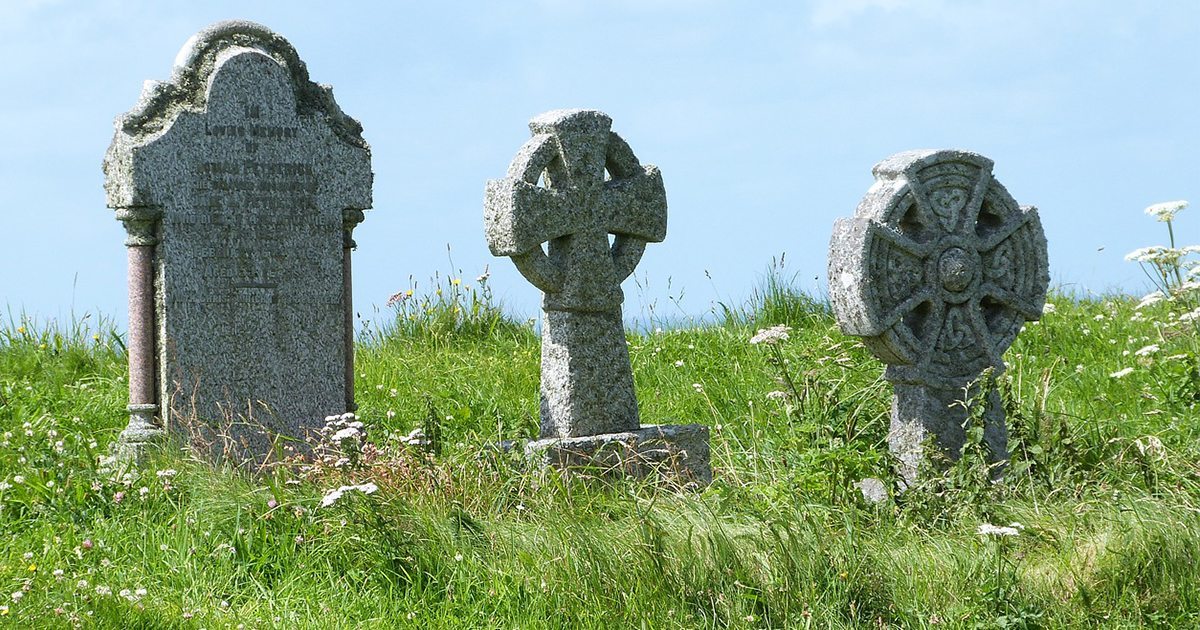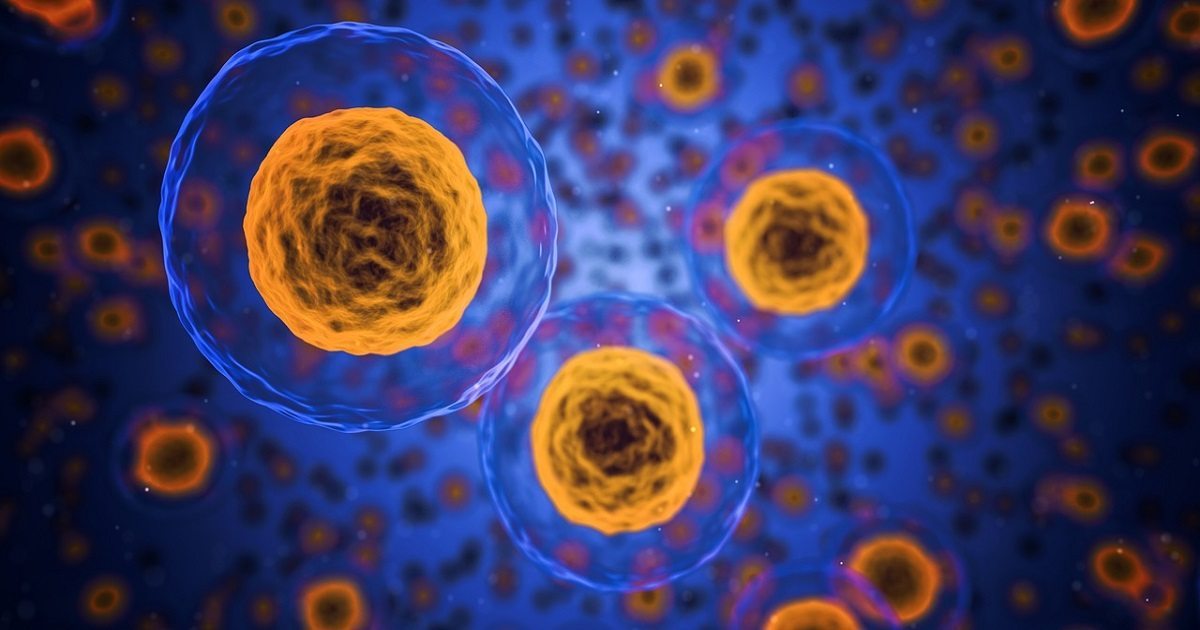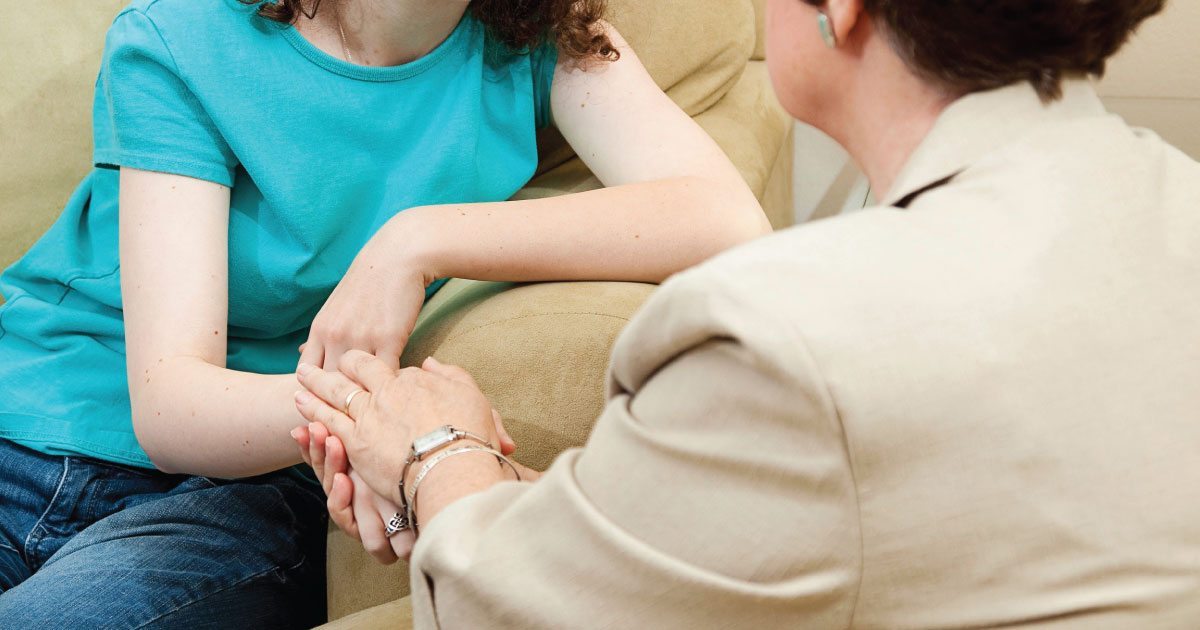Month: March 2018

“When someone has cancer, the whole family and everyone who loves them does, too.” –Terri Clark
Author: Brianne Hoglin
It’s nearly impossible to forget the moments in life when you receive news that forever places a mark on your personal story. When I was a freshman in college, hundreds of miles away from my family and home I was studying one evening when I got a phone call from my mom, who offered me the heart-wrenching news that my grandfather had finally lost his second battle with lung cancer and passed away moments earlier. That week had been especially hard on him, concluding a difficult summer where a second fight with lung cancer proved much more furious than the first. As his family it was a painful season of life for us as well to watch the exponential increase in the cruelty of his symptoms, the decline in quality of living, and the steady damage to his will to continue fighting. At reception of the news I remember feebly falling to the ground in the hallway and just crying uncontrollably, with no relief or comfort coming from the teachers and peers that tried to console me. At that moment I remember feeling like the room was spinning and at the root of it all I just felt so helpless.
That feeling of helplessness is often a huge weight that hangs on the patients dealing with any type of cancer as well as their families. Mesothelioma is one such cancer that affects thousands of individuals every year, and which has seen an increase in diagnosed cases within the span of recent years [1]. With the only known cause of mesothelioma being exposure to asbestos, there is an additional burden placed on the sufferers of this disease and their families with the consideration of the neglect for prevention, and the absence of sufficient information provided to them regarding the risk presented by asbestos exposure. Many workers in the United States in laborer occupations such as emergency responders, industrial manufacturers and builders, and factory workers have had unreasonably high exposure rates to asbestos and in response have unfortunately seen high incidence of mesothelioma symptoms and diagnoses [2]. While now there is much more information available and more precautions taken, by the nature of the development of the disease, most of the affected individuals most likely suffered exposure 10-40 years ago [1]. And even though there are treatment options available, the reality of mesothelioma presents a discouraging prognosis, especially depending on the stage of cancer which the patient is facing when the initial diagnosis is made.
Since I have seen firsthand the effects and stress put onto a family by the cruel outcome of watching a loved one endure the symptoms, both physical and psychological, caused by the terrible diagnosis of a lung specific cancer I am rigorously inspired to make a difference in in the lives of those fighting this overwhelming battle. As a result, the desire to help alleviate as much as that feeling of complete helplessness as possible is a constant driving factor which inspires me every day to continue to pursue a future career in medicine. My own personal experience along with the testimonies of people who have been diagnosed with mesothelioma and other cancers lights an indestructible fire within me. I passionately anticipate the opportunity to someday have the skill and facility to provide some relief to families and patients impacted by a threatening diagnosis. I hope to do this by making adequate information and appropriate treatments available to them. This passion further drives me to tackle the high challenge of medical school and the work required to become a competent medical doctor. When it comes down to the foundation of things, simply put, I want to offer the best care possible to the individuals, focusing on the patient and the opportunity for a beneficial relationship rather than only the disease.
However, treatment and support for patients and their families is only part of the battle when it comes to this disease. While mesothelioma has limited treatments available, there is boundless occasion for prevention. As a community of citizens we should consider it a priority to not only educate people of the dangers and risks their occupation may afford, but to also make it accessible and required for adequate preventative measures to be taken. While huge strides have been made to make asbestos exposure much less likely, there is still high risk to be payed attention to. Simply by spreading awareness and taking responsibility onto ourselves, we have the potential to make a huge impact. Especially with the network that current social media provides, playing our individual roles is literally at our fingertips.
An online community can not only help spread awareness and aid prevention efforts, but it can also be a valuable resource to those suffering from the effects of mesothelioma and other cancers. With online support groups and advice, there is a nearly unlimited possibility for patients and their families to avoid completely the feeling of aloneness. I would encourage anyone faced with cancer to not be ashamed or timid in seeking out support, but rather to take advantage of every resource offered to them. And along with receiving support, sharing personal stories and experiences could benefit a whole other community of people. After all, as people we need community and are much stronger together.
I would hope that everyone, regardless of their own personal experience with mesothelioma or any cancer, would take it upon themselves to help build a community of support and awareness to combat the devastating nature of the disease and help make a lasting difference in the lives of the thousands affected. This should be done both in honor of those who have fought, or are fighting mesothelioma, as well as in celebration of the lives that can be changed for the better by preventing the disease from ever surfacing. Because cancer is something that not only affects the person diagnosed, but like Terri Clark said in her quote regarding her mother’s battle with cancer, it spreads to affect everyone involved.
Works Cited
[1] “Mesothelioma Cancer: Prevalence, Occurrence, Causes and Legal View.” Carcinomasymptoms.com. 2003-2015. Web. 2 Sept. 2015.
http://carcinomasymptoms.com/cancer-symptom.htm
[2] “Mesothelioma Prognosis & Survival Rate Information.” MesotheliomaHelp.org. Belluck & Fox, LLP, 11 Mar. 2014. Web. 2 Sept. 2015.
[3] Clark, Terri. Lifehack Quotes. N.p., n.d. Web. 2 Sept. 2015.
http://quotes.lifehack.org/quote/terri-clark/when-someone-has-cancer-the-whole-family
About
 Brianne Hoglin
Brianne Hoglin
I am a premed student pursuing a major in Molecular Biology as well as a minor in Chemistry at Lipscomb University in Nashville, Tennessee. Outside of academics I am a part of the NCAA Division 1 Women’s Track and Cross Country programs here at Lipscomb and a mentor for the IDEAL Program for students with disabilities. Since my start of participation in the essay competition I have talked with some people about the facts I have learned, and shared my thoughts on what we should do to raise awareness as a community. My participation in this experience has also raised thoughts to me about how my career as a doctor can be used to help raise awareness, possibly by me becoming a specialist in oncology.

The Silent Killer
There is no such thing as safe exposure to asbestos. Airborne exposure to these microscopic, fibrous minerals leads to asbestos-related cancers, including mesothelioma, lung cancer, and asbestosis, and results in death for an estimated 107,000 innocent individuals each year. The horrid truth is that all deaths and illnesses related to asbestos are entirely preventable, yet each day 30 Americans will die of an asbestos-related illness. The manufacturing, import and export, and use of asbestos in every day products continues, however, despite publication of scientific evidence that proves the life-terminating effects of the material.
The first uses of asbestos, which literally means “unquenchable” or “inextinguishable,” dates back to over 2,000 years ago on the ancient Greek island of Ewoia, believed to be home of the first asbestos mine. The “near-magical properties” of asbestos, from its tensile strength to its ability to resist fire, heat, and acid, resulted in popular use and the development of a thriving asbestos industry. Countries across the globe contributed to this industry for decades prior to the discovery of its detrimental health effects. Industrialized countries, including the United States, have used this inexpensive, naturally occurring, fibrous mineral for a wide array of products, including pipe and ceiling insulation, ship-building materials, brake shoes and pads, bricks, roofing, and flooring, and more.
With the rise of the Industrial Revolution during the late 1800s, asbestos use in the U.S. began to flourish and gained significant popularity in a number of industries. Even with its historically documented biological effects, it began to be used as insulation for steam pipes, turbines, boilers, kilns, ovens, and other high-temperature products. As the centuries waned, asbestos use continued and found its way to the U.S. Navy. The silent killer was utilized to insulate virtually ever chamber in the navy vessels and thousands of the veterans of World War I, World War II, and the Vietnam War were exposed to asbestos while aboard military aircraft and navy ships. Asbestos was also employed in the production of over 300 products necessary in the construction and preservation of navy vessels, such as valves, adhesives, cables and gaskets.
With the progression of time, more and more uses for asbestos were discovered, even after several studies in the U.S. in the early-1900s noted that asbestos workers were dying unnaturally young and major medical journals began to publish articles that directly linked asbestos to cancer. Asbestos use continued to surge in the automobile industry, in brake and clutch lining, and in the construction industry, in a variety of products including cement, roof of shingles, floor and ceiling tiles, siding, stucco, plaster, and more. Unfortunately, records indicate that industries continued to ignore the noted dangers of asbestos and continued to unjustly expose its employees to the deadly material for the sake of profits. It wasn’t until 1971 that government legislation, the United States Occupational Safety and Health Administration, intervened and began to regulate asbestos exposure.
Presently, however, the U.S. still has not banned asbestos and continues to stubbornly import chrysotile asbestos to “meet manufacturing needs,” despite the strong scientific evidence of the severe health risks associated with asbestos exposure. Ships docked in U.S. ports still unload asbestos in the states of Louisiana, Texas, California and New Jersey – just to name a few. For the past two years, the chloralkali industry has increased usages, even though viable and affordable asbestos substitutes exist and have been utilized in other countries. More than 31 million tons of asbestos was imported from 1900 to present, which has and continues to compromise workers’ health and safety. An estimated 35 million U.S. homes, schools, and buildings contain asbestos-contaminated materials. The Occupational Safety and Health Administration states that in the U.S., “An estimated 1.3 million employees in the construction and general industry face significant asbestos exposure on the job.” In May 2010, the United States President’s Cancer Panel reported, “Construction workers were found to be 11 times more likely to develop mesothelioma, due to asbestos exposures at the site.” Additionally, it was reported that 2,600 tons of asbestos was collected after the Joplin, Missouri tornado and tons of toxic debris littered the coastline after Hurricane Sandy. Occupational exposures can occur during maintenance, construction, abatement, and hazardous debris removal. Analyzing the asbestos import rates and morbidity/mortality rates, the ongoing asbestos problem in the U.S. is obvious. The correlations of the findings are not limited to the United States because they also have global ramifications. This data from the U.S. analysis when correlated to global occupational exposure reveals a global public health trend that affects all of the Americas.
When my father was diagnosed with stage-four mesothelioma in 2002, the most progressive stage of the cancer, the doctors said the particles had been lingering in his system without any symptoms for 25 years and estimated he had one month to live. Ironically, while working and trying to make a living for himself, he was unknowingly exposed to a toxic material that would financially cost him more for treatment than what he was making at work, and eventually cost him his life. He went against the doctor’s estimates and fought with the cancer for seven years. In those seven years, he overcame surgeries, numerous chemotherapy sessions, and lived his life in a constant struggle. Asbestos-related cancer victims go on to die painful, brutal deaths. In the last sixth months of his life, similar to what many patients will endure, he could not eat, hardly slept, had a tube shoved up his nose, and suffered excessively as a result of exposure to this material. Exposure to asbestos did not only result in a physical and emotional struggle for my father, but for my whole family. Even if other members of my family, anyone my father influenced, or myself were not directly exposed to it, we all had to face the consequences of asbestos. Asbestos not only affects millions of its victims, but also billions of families, friends, and communities around the world.
To protect the health of all people in the world – industrial workers, construction workers, spouses and children, now and in generations to come – it is essential to spread asbestos and mesothelioma awareness. More than two million tons of this material is produced each year, and according to the International Social Security Administration, figures for asbestos manufacture and use have begun to climb again. According to the U.S. Geological Survey, in 2012 alone, 1,060 tons of asbestos were imported into the U.S. to meet so-called “manufacturing needs.” Asbestos lingers not only in the workplace, but also in the environment. In countries like the U.S. where asbestos continues to be used today, asbestos-contaminated dust accumulates in thousands of communities. Safer substitutes to replace this killer have already been implemented successfully in 52 countries. The only realistic and sustainable answer to this pandemic is complete removal of asbestos worldwide. The primary influence on governments to ban asbestos comes from the voice of the public. Very rarely do people see a story on asbestos in the media, but when the public is educated and acts on the information, the greatest success is seen. The fate of hundreds relies on citizens to promote awareness and come together to demand all countries to ban the manufacture, trade and use of all types of asbestos and asbestos-containing products as soon as possible. Ultimately, what’s worth more – an inexpensive material or our lives?
References
- ADAO (Asbestos Disease Awareness Organization). “Education.” 2010. Web. 01 Apr. 2011.
http://www.asbestosdiseaseawareness.org/education - American Public Health Association. “The Elimination of Asbestos.” 2009. Web. 14 October 2013.
http://www.asbestosdiseaseawareness.org/eLibrary/Educational_Materials/APHA_Asbestos_Resolution.pdf - Collegium Ramazzini. “Asbestos is Still With Us: Repeat Call for a Universal Ban.” 20 April 2010. Bologna, Italy: Collegium Ramazinni. Web. 14 Oct. 2013.
http://www.collegiumramazzini.org/download/15_FifteenthCRStatement(2010).pdf - Environmental Working Group. “Asbestos Is Still Not Banned.” Environmental Working Group. 4 Mar. 2004. Web. 14 Oct. 2013.
http://www.ewg.org/research/asbestos-think-again/asbestos-still-not-banned - Haynes, Rebecca. “A Worn-Out Welcome: Renewed Call for a Global Ban on Asbestos.” Environmental Health Perspective 118:a298-a303. doi:10.1289/ehp.118-a298
- International Labour Organization. “The ILO Position on Safety in the Use of Asbestos.”
- The ILO Position on Safety in the Use of Asbestos. 06 Sept. 2010. Web. 14 Oct. 2013.
http://www.ilo.org/asia/whatwedo/publications/WCMS_182426/lang–en/index.htm - ISSA (International Social Security Association). “Asbestos: Towards a Worldwide Ban.” Geneva: International Social Security Association, 2006. Web. 14 Oct. 2013
http://www.issa.int/Resursy/ISSA-Publications/Asbestos-Towards-a-worldwide-ban - Mesothelioma Treatment Centers. “Life Expectancy of Mesothelioma Cancer Patients.” Mesothelioma Treatment, Options & Guidelines, Asbestos Cancer Diagnosis & Support. Web. 14 Oct. 2013
http://www.mesotheliomatreatmentcenters.org/mesothelioma-cancer/life-expectancy/ - Morris, Jim. “Overview: Exporting an Epidemic – Dangers in the Dust.” The Center for Public Integrity. 21 July 2010. Web. 14 Oct. 2013.
https://www.publicintegrity.org/health/public-health/asbestos/dangers-dust - The Lancet. “9/11.” TheLancet.com. 1 Sept. 2011. Web. 14 Oct. 2013
http://secure.jbs.elsevierhealth.com/action/cookieAbsent - United States Environmental Protection Agency. “EPA.” Learn About Asbestos. 14 Mar. 2013. Web. 14 Oct. 2013
http://www2.epa.gov/asbestos/learn-about-asbestos#effects - Welch, LS. 2007. “Asbestos Exposure Causes Mesothelioma, But Not This Asbestos Exposure: Anamicus Brief to the Michigan Supreme Court. Int J Occup Environ Health. 13:318-327.
- WHO (World Health Organization). “Elimination of Asbestos-Related Disease.” 2006. Web. 14 Oct. 2013.
http://whqlibdoc.who.int/hq/2006/WHO_SDE_OEH_06.03_eng.pdf

World Cancer Day Is A Reminder to Support the Mesothelioma Community
February 4 was World Cancer Day, a day to come together to pray for those afflicted with this disease, the families impacted, the warriors still fighting, and a cure. This is time for the entire cancer community to be recognized and bring light to the fact that there is much work to be done to find a cure for all cancers, in order to bring these horrific nightmares to a conclusion.
Clinical trials, experimental treatments, and therapies are all in the news. The awareness this creates is paramount; it could help save someone’s life that hears about them, as well as change millions of lives by their successes.
I am honored to be an active advocate in this community, more specifically the mesothelioma community. I am an unhappy member, but a proud one, working to raise funds and to help others in memory of my Dad. Let’s face it, this is a club that no one wants to be in. There’s no secret handshake, no membership fee, and no perks. This club is full of heartbroken associates; comrades who have endured highs and lows, suffering and joy, throughout their cancer story. The survivors are beautiful examples, the warriors valiant knights, and the lost mourned kinsmen.
No matter what your role is in this narrative, whether you are a patient or a loved one, a medical professional or an acquaintance, we all have a part to play. We need the support of everyone during their battle with cancer in order to end this era in our history, and I believe that it can happen. Advocacy is key, informing the general public about what is going on in the cancer field. Funds are necessary to perform research and help those who cannot afford treatment on their own. Prayers are essential. Time is of the essence. Faith is what will get us through.
So take a little time to think about where you fit. The story can be changed for the better by your support, your willingness to give, and your capacity to love. Let’s work together, and change the way we look at cancer… let’s see it in the rear-view mirror.

Nurse Explains the Immune System and Mesothelioma
This winter the flu has been prevalent, and has affected a record number of people. The flu vaccine can help prevent people from getting a particular strain of the flu, and if they do get it, it may be less severe. Why do the flu and other common ailments affect people so differently? How does our body protect us against diseases? Do products that claim to “boost” our immune system work?
The key system that the body uses to defend against diseases is the immune system. The immune system is a complicated system that works as a balanced network all over our body to protect us against disease.
There are a lot of statements claiming that by taking a certain supplement, living a certain way, following a specific diet, or even drinking a certain shake, you can “boost” your immune system. Is that even scientifically possible?
At present there are no scientifically proven direct links between lifestyle and enhanced immune function. There is evidence, however, that every part of our body functions better when following a healthy living lifestyle. This includes getting enough sleep, reducing stress, not smoking, eating a healthy diet high in vegetables, exercising regularly, drinking alcohol only in moderation, maintaining a healthy weight, and washing your hands frequently.
The cancer community and the mesothelioma community have been hearing a good deal about research into the immune system. Immunotherapy is a treatment that uses certain specific parts of the immune system to fight disease. Immunotherapy works in a variety of ways by stimulating the immune system to work harder, or by giving the immune system man-made proteins to fight the cancer cells. Immunotherapy can work with existing therapies to fight cancer or it can be the principal treatment depending on the patient‘s cancer. Targeted therapies involving activating and harnessing targeted cells in the immune system have shown promise for some patients with malignant mesothelioma.
People diagnosed with malignant mesothelioma, or any other cancer, and their caregivers, need to take care of themselves. A healthy lifestyle is a positive way to help your overall health. Malignant mesothelioma is a complicated disease, there are no easy answers, or instant cures, but the immune system is proving to be a key component in the search for a cure. Until the researchers unharness the workings of the immune system, it is in everybody’s best interest that we all adopt a healthy lifestyle! Take care of yourself!

Mesothelioma Patients Leave Lasting Gifts For Loved Ones Left in the Wake of the Disease
Facing death is probably is one of the most difficult issues that we have to deal with as humans. For some, there is warning and time to plan, for others though, death comes unexpectedly. The courage of people to think of others as they face their own mortality is something that is awe-inspiring.
As nurses we hear many stories and perspectives. Two women recently have done unselfish, thoughtful, amazing things for their husbands to help deal with their deaths when it happens.
Mrs. A is in her late 50’s, has been married for many years, has adult children, and is very social. She also has advanced, recurrent cancer and does not know how much time she has left. She has always been in charge of her and her husband’s social life. She was worried he might become reclusive when she dies. So she set up a social club for him and five other men who are friends and part of their social group. Now, the men meet once a week, socialize, watch a game, have a drink, and support each other. At first her husband was reluctant, but now calls them “his play dates.” The other men in the group also enjoy their “playdates” and rarely do any of them miss a week. Mrs. A now has peace of mind that her husband will have support when she dies; whenever that might be.
Mrs. B is in her mid 60’s, she has been married for a number of years. She and her husband are both professionals with busy careers. She has metastatic cancer and is facing her death. They have welcomed a kitten into their home. Mrs. B. feels that will help make her absence a little less lonely for her husband. A kitten will not replace her, of course, but it can represent life and love and responsibility. Sometimes knowing our loved one will not be alone is comforting to the dying person.
In the face of their own mortality, both women have found comfort in thinking of their husbands. Both show courage and compassion.
Many people diagnosed with malignant mesothelioma are like these two women. I have seen many people more concerned about the effects of their diagnosis on their families, and how they would cope when they die, than on themselves and what they are going through.
Facing death takes courage. Reach out, talk about your fears, anxiety, or whatever is concerning you. We all know death is uncertain, but providing our loved ones with tangible support may help the dying, and provide some relief in the future for their loved ones.
Free Mesothelioma Patient & Treatment Guide
We’d like to offer you our in-depth guide, “A Patient’s Guide to Mesothelioma,” absolutely free of charge.
It contains a wealth of information and resources to help you better understand the condition, choose (and afford) appropriate treatment, and exercise your legal right to compensation.
Download Now